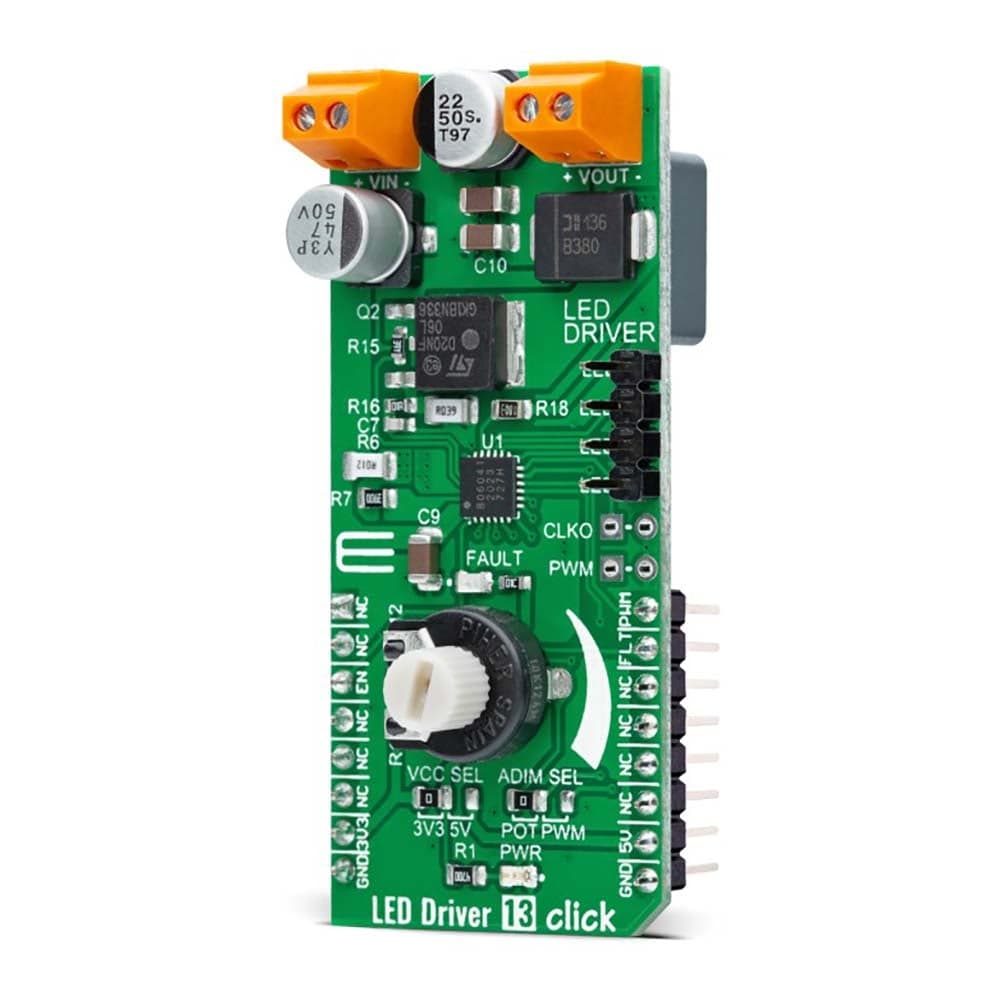
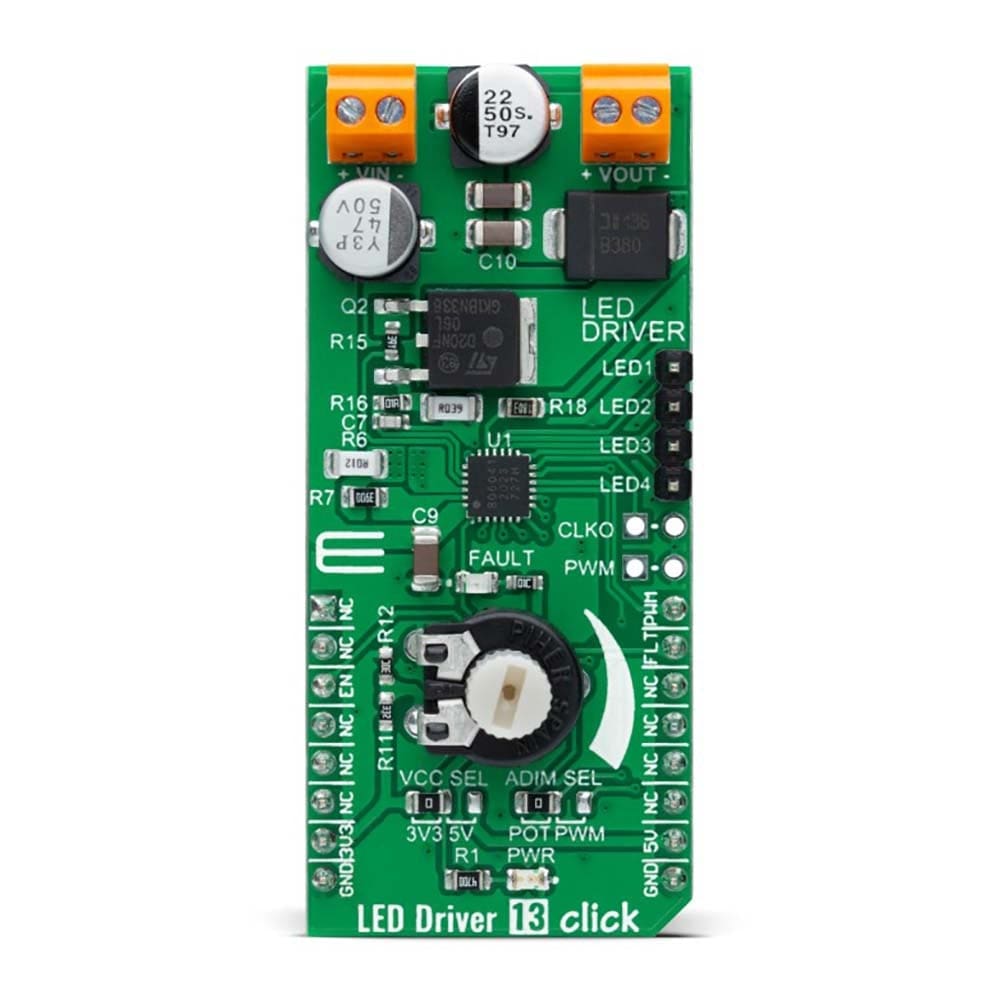
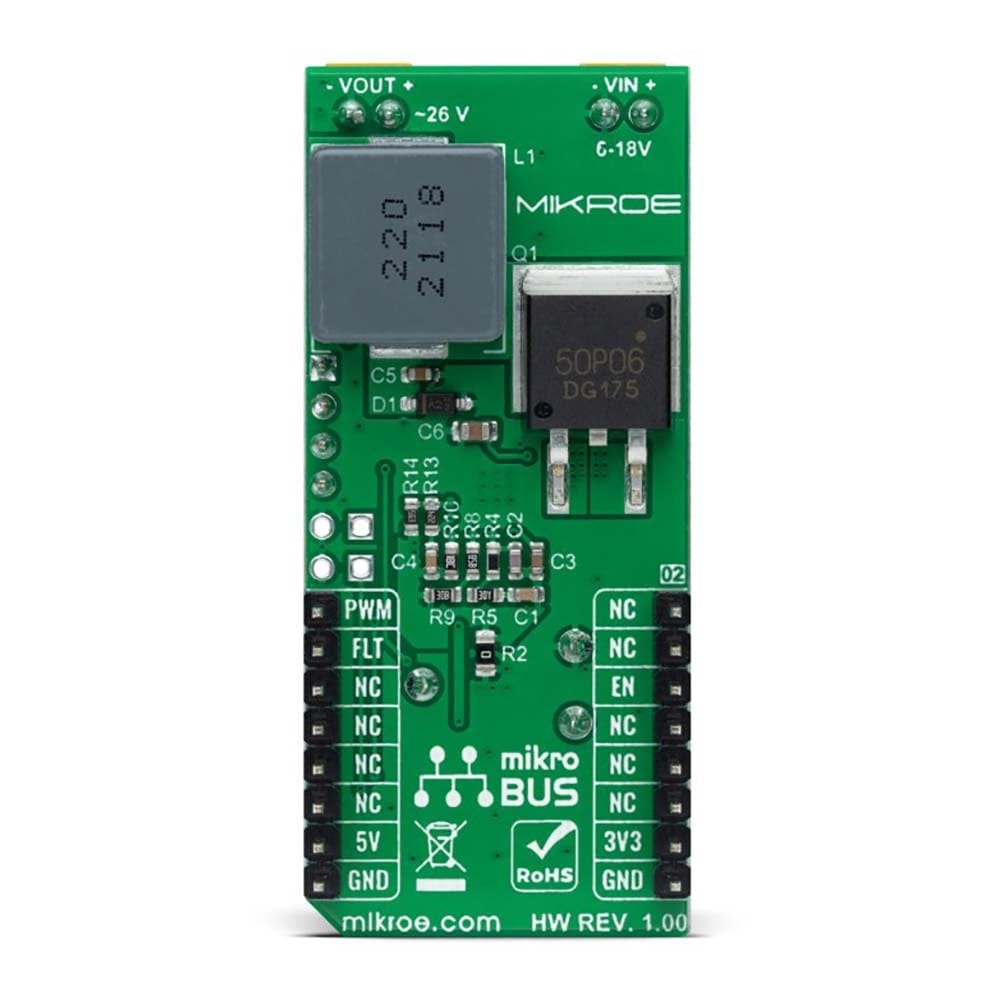
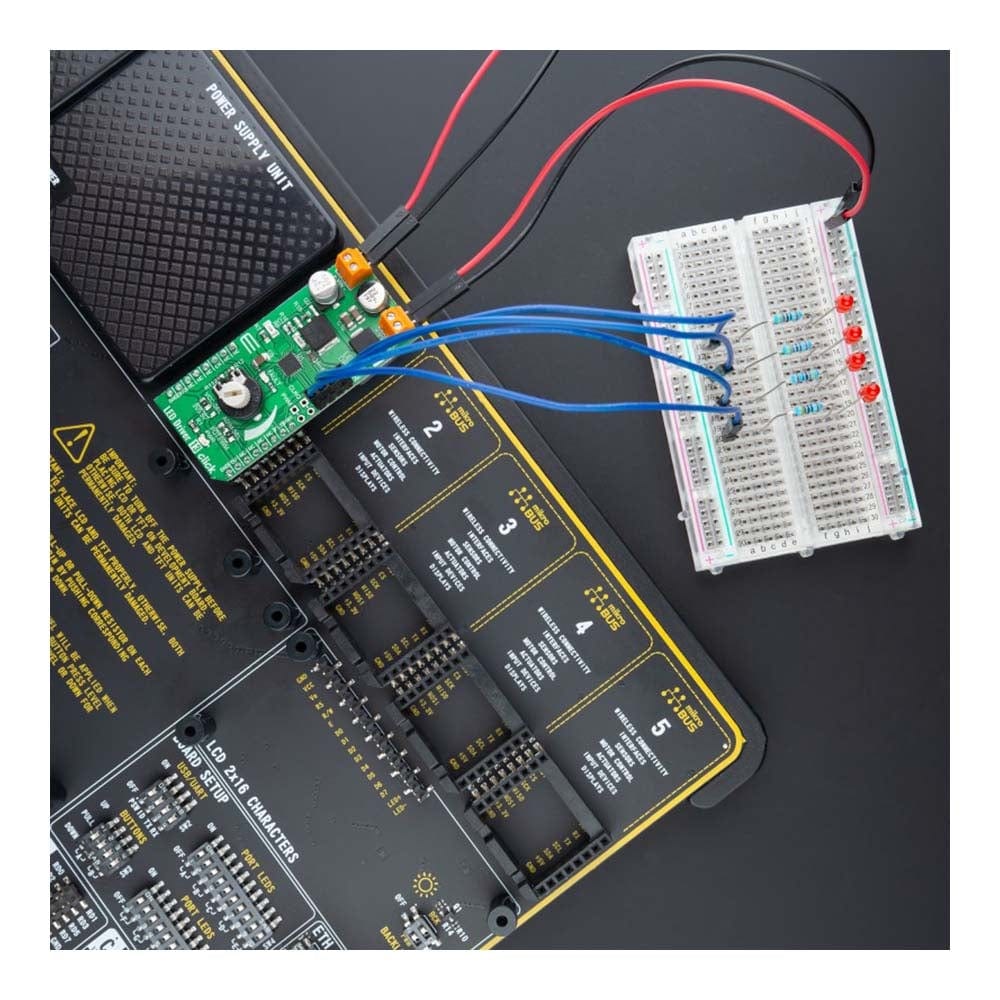
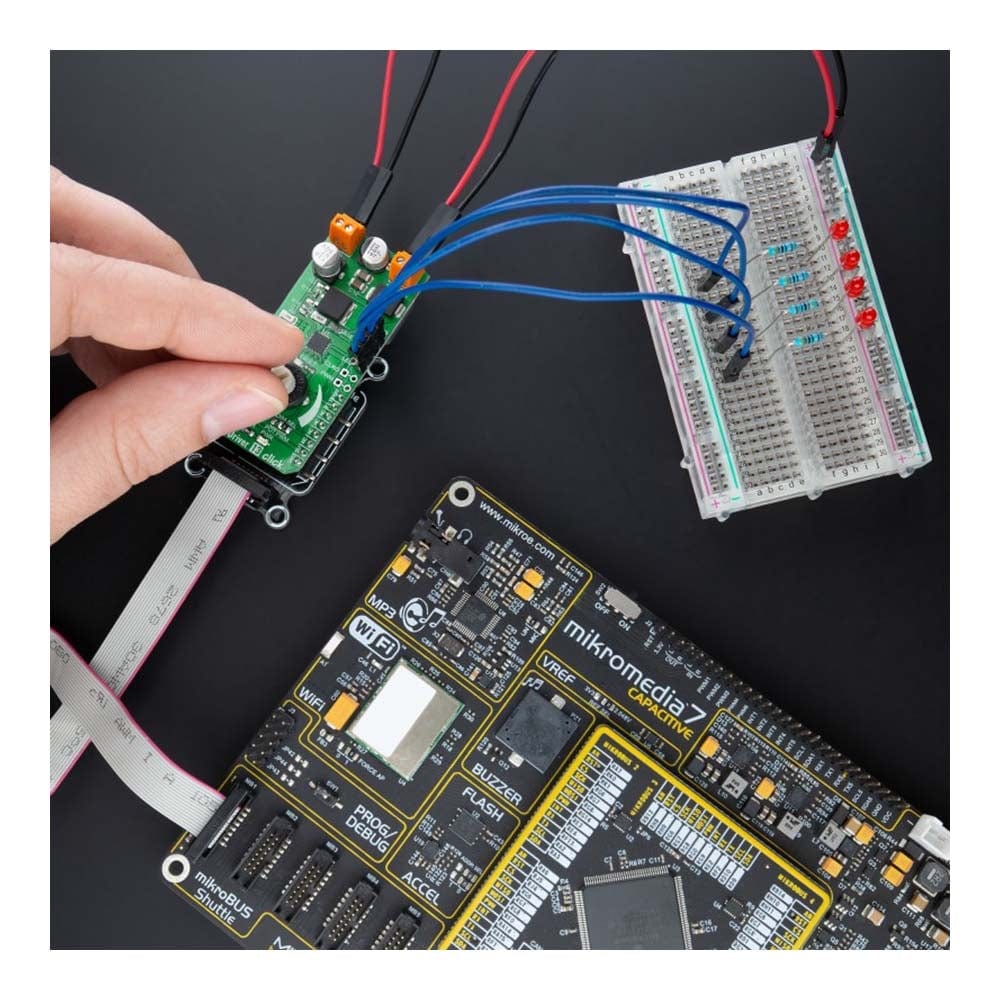
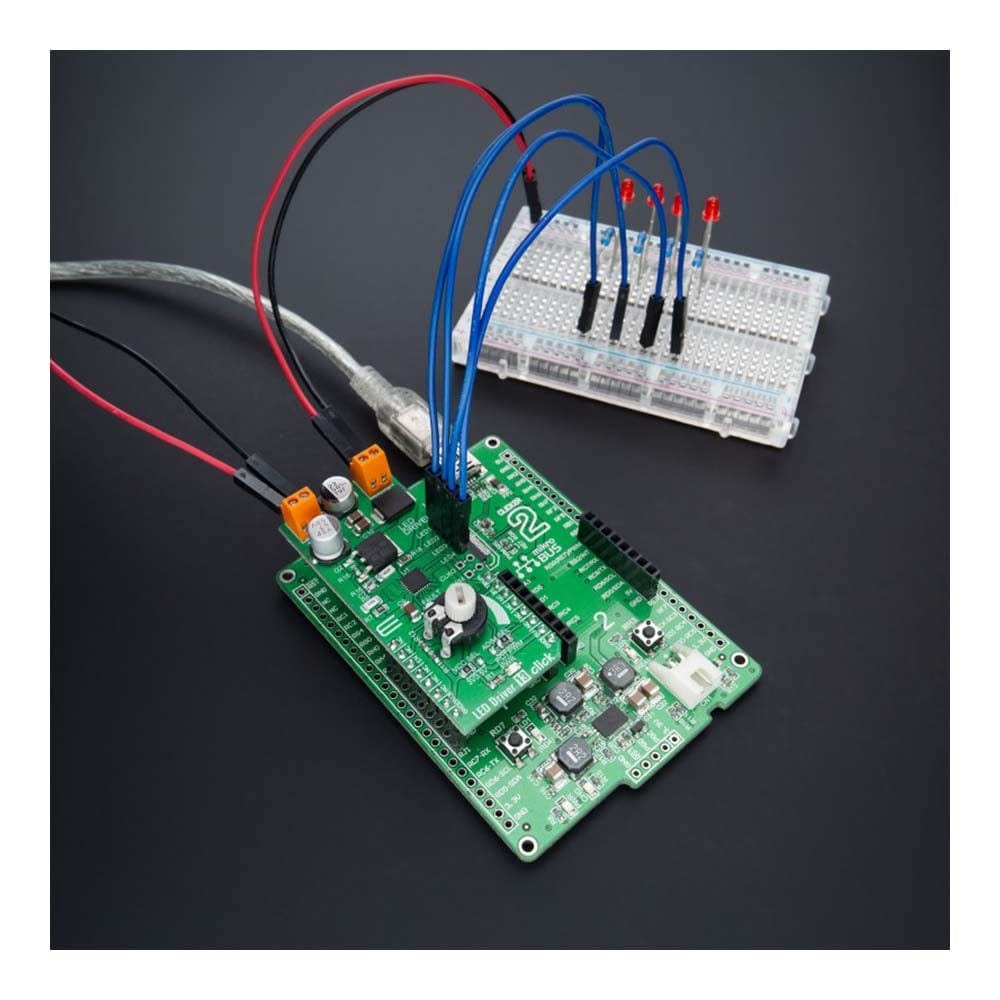
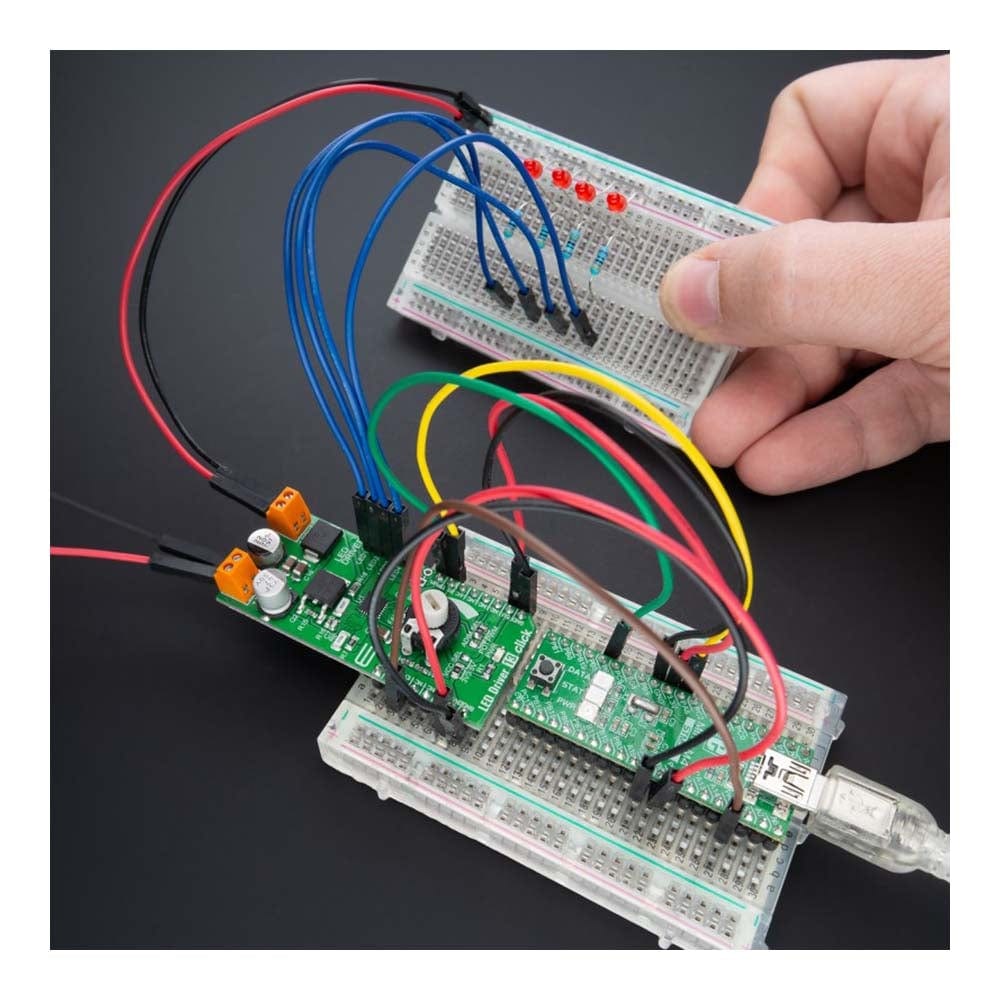
Key Features
Overview
The LED Driver 13 Click Board™ is a compact add-on board that simplifies the control of multiple LEDs. This board features the A80604-1, a 4-channel LED driver designed at a switching frequency of 400kHz that provides 150mA per channel from Allegro Microsystems. It is powered by an external power supply in the range of 6V to 18V, providing an output voltage of approximately 26V, which is used to power LEDs connected to LED channels. On the logical side, this board uses both 3V3 and 5V with mikroBUS™ power rails and communicates with the MCU via GPIO pins. In addition, the user is given the option of analog or digital LED dimming selection, using a PWM pin from the mikroBUS™ socket or via an onboard potentiometer/external PWM signal. This Click board™ is suitable for various automotive applications, such as infotainment backlighting, interior/exterior lighting, heads-up display, and more.
The LED Driver 13 Click Board™ is supported by a mikroSDK compliant library, which includes functions that simplify software development. This Click board™ comes as a fully tested product, ready to be used on a system equipped with the mikroBUS™ socket.
Downloads
Das LED Driver 13 Click Board™ ist eine kompakte Zusatzplatine, die die Steuerung mehrerer LEDs vereinfacht. Diese Platine verfügt über den A80604-1, einen 4-Kanal-LED-Treiber mit einer Schaltfrequenz von 400 kHz, der 150 mA pro Kanal von Allegro Microsystems liefert. Er wird von einem externen Netzteil im Bereich von 6 V bis 18 V gespeist und liefert eine Ausgangsspannung von ungefähr 26 V, die zur Stromversorgung der an die LED-Kanäle angeschlossenen LEDs verwendet wird. Auf der logischen Seite verwendet diese Platine sowohl 3 V als auch 5 V mit mikroBUS™-Stromschienen und kommuniziert über GPIO-Pins mit der MCU. Darüber hinaus hat der Benutzer die Möglichkeit, die LED-Dimmung analog oder digital auszuwählen, indem er einen PWM-Pin von der mikroBUS™-Buchse oder ein integriertes Potentiometer/externes PWM-Signal verwendet. Dieses Click Board™ eignet sich für verschiedene Automobilanwendungen, wie etwa Infotainment-Hintergrundbeleuchtung, Innen-/Außenbeleuchtung, Head-up-Display und mehr.
Das LED Driver 13 Click Board™ wird von einer mikroSDK-kompatiblen Bibliothek unterstützt, die Funktionen enthält, die die Softwareentwicklung vereinfachen. Dieses Click Board™ wird als vollständig getestetes Produkt geliefert und ist bereit für den Einsatz auf einem System, das mit der mikroBUS™-Buchse ausgestattet ist.
| General Information | |
|---|---|
Part Number (SKU) |
MIKROE-4965
|
Manufacturer |
|
| Physical and Mechanical | |
Weight |
0.02 kg
|
| Other | |
Country of Origin |
|
HS Code Customs Tariff code
|
|
EAN |
8606027389627
|
Warranty |
|
Frequently Asked Questions
Have a Question?
Be the first to ask a question about this.







